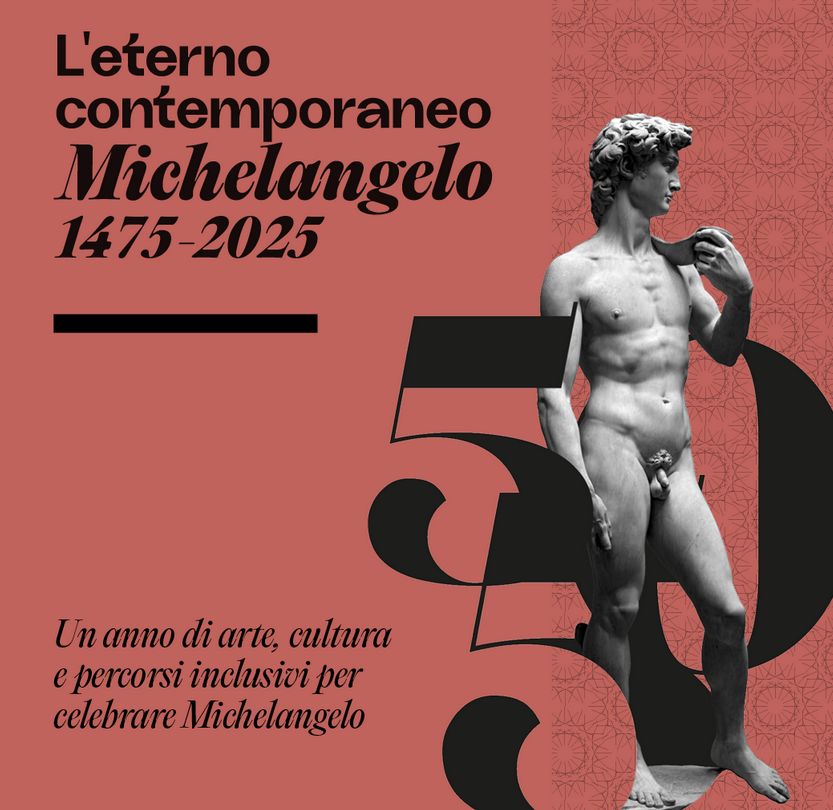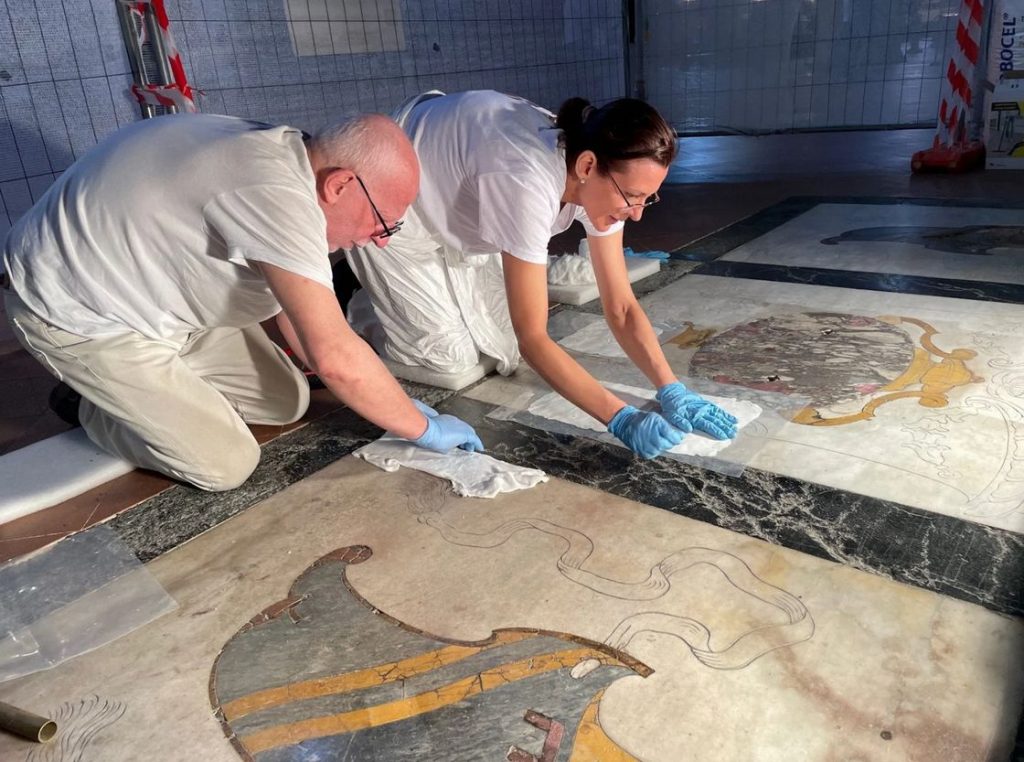This year marks the 550th anniversary since the birth of Michelangelo Buonarroti (1475-1564), and the Accademia Gallery in Florence is organizing a series of events to celebrate with a project entitled The Eternal Contemporary: Michelangelo 1475 – 2025. The initiative kicked off on March 6, 2025, and events are planned throughout the year. The figure of Michelangelo continues to exert a profound influence on artists, scholars and art lovers of every era. His innovative artistic vision and the expressive power of his works still inspire new reflections and interpretations today.

The Accademia Gallery is a museum with particular ties to the Renaissance artist, ties which began with the placement of the David in 1873 within a tribune built specifically for him, and later on as it gained Michelangelo’s Prisoners, Saint Matthew and the Palestrina Pietà.
The review organized by the Galleria dell’Accademia will feature the participation of distinguished figures from the world of art and culture, including Cristina Acidini, Francesco Caglioti, Marco Pierini, Tomaso Montanari, Francesco Gori and Vinicio Capossela, who will offer different perspectives on the artist’s legacy with talks on Mondays, when the museums is traditionally closed to the public.
The calendar continues on March 10 with a talk by Cristina Acidini titled Michelangelo and Vittoria Colonna, a Friendship in the Name of Art. The talk will explore the complex relationship between the artist and the marquise of Pescara.
On April 7 a talk by Francesco Caglioti is to be held on The David: Prehistory and Protohistory, about the historical genesis of the celebrated statue.
On May 12, it will be the turn of Marco Pierini and his talk The Presence of Michelangelo in Art and Contemporary Culture, aimed at analyzing the artists’s vast influence in the visual language of the 20th century.
On June 9 Tommaso Montanari and actor Francesco Gori will read passages from Michelangelo’s letters, as well as selected passages from the artist’s biographies by Giorgio Vasari and Ascanio Condivi, exploring the ambitious realisation of Pope Julius II’s tomb in the context of Rome in the early sixteenth century. The reading is called “The world has nothing to equal it”. The Prisoners and the Troubled Undertaking of Julius II’s Tomb.
On a yet unspecified date in the fall, famed musical artist Vinicio Caposella will play under the shadow of David and The Prisoners accompanied by an orchestra featuring violinist Mario Brunello, a concert entitled Flee, Lovers, Love – Rhymes and Lamentations for Michelangelo.
Buonarotti Family Tombstone is restored
The Opera di Santa Croce teamed up with the Opificio delle Pietre Dure to restore the Buonarroti family tombstone inside the church in time for the celebrations. The Buonarroti family had a strong bond to the Santa Croce neighborhood where they lived, which is why they established their family altar in the Basilica in 1570, in front of the tombstone and next to the monument designed by Giorgio Vasari. The latter underwent restoration recently in 2018 thanks to a fundraising initiative which involved over one hundred donors from all over the world. The Basilica of Santa Croce, known as the “temple of the Italian glories,” houses the tombs of a number of national heroes, including Galileo, Niccolò Macchiavelli, and Leonardo da Vinci. The Bounarroti tombstone was bought six years after Michelangelo’s death.

The tombstone was damaged over time partly by simple wear and tear but also by the devastating 1966 flood of the Arno River, which damaged or destroyed countless artworks and rare books. Experts from the Opificio first cleaned the monument, then consolidated sections affected by disintegration and fracturing, grouted the smallest gaps, and repaired one especially large gap in the left panel.
A wealth of Tuscan stones come together in the monument, including white Carrara marble, a blue-gray marble variety known as Bardiglio, yellow Sienese marble, Albero stone (a mix of clay and limestone), Maremma red marble, and Medici breccia (rock consisting of granular fragments cemented together). Three panels of Carrara marble are bordered by a green serpentine from Prato. A decorative vase at center is bordered by side panels bearing coats of arms in the shape of crumpled shields emblazoned with golden stripes against a blue field and a red heraldic symbol that refers to the house of Anjou.